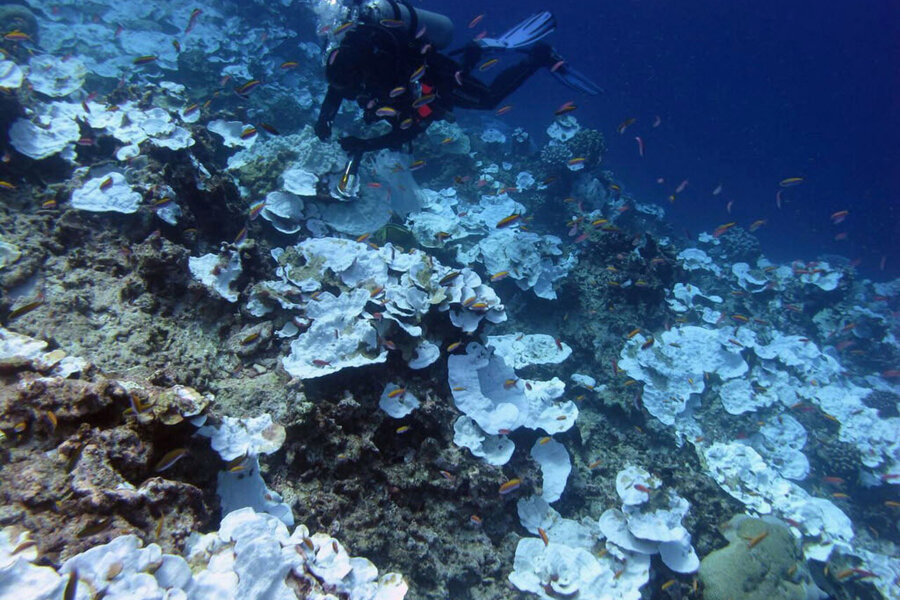Turneffe Island Resort
Picture this: You are stranded on a deserted island.
What are three things you would wish for?
While a toothbrush, food and water might be high on the list, I wouldn’t be surprised if some of you were thinking along the lines of:
- A luxurious, outdoor infinity pool
- Gourmet meals prepared daily
- And, of course, access to world-class scuba diving around The Great Blue hole
If your list consists of these three things (or something similar), then I’ve got great news…
Welcome To Paradise
Turneffe Island Resort in Belize is the perfect vacation getaway for thrill seekers and family and friends looking to kick back and relax. Nestled in “paradise,” Turneffe Island Resort is a private Island located off the coast of Belize, just 30-miles from the world-famous Great Blue Hole.
The 14-acre getaway houses 22 guestrooms, creating an intimate and uninhibited atmosphere. While the resort isn’t new (it’s actually 15-years-old), the property has just undergone some major renovations. The results are breathtaking, with entirely upgraded rooms, a luxurious spa, an outdoor bar by the pool, along with a gourmet dinning room with daily meals prepared by experienced chefs.
 Turneffe Island Resort
Turneffe Island ResortLuxury aside, this private resort is also known for its world-renowned scuba diving, fly fishing, snorkeling and breathtaking views. Turneffe Island Resort would be considered paradise for vacationers looking to really explore the Caribbean Ocean.
And with all-inclusive resort packages starting as low as $2,090 (per person), vacation goers can experience the “private-island life” at affordable rates.
Here are 5 highlights that I got to experience during my visit to this tropical paradise:
#1. Scuba Diving
 Turneffe Island Resort
Turneffe Island ResortWith six dive masters, thirty-two diving sites and fifteen dives per week, Turneffe Island makes for the perfect scuba diving destination. Guests are able to dive deep down into some of Belize’s most lucrative depths and caves. Real thrill seekers even have the chance to dive 130 feet deep inside the Great Blue Hole to get glimpses of stalactites and rare sea creatures.
#2: Snorkeling
 Turneffe Island Resort
Turneffe Island ResortI am by no means a pro at snorkeling, but I knew I couldn’t miss the opportunity to snorkel the perimeter of The Great Blue Hole at Turneffe Island Resort. Located on a geological wonder – the coral island of Little Caye Bokel – Turneffe sits at the southern elbow of the Turneffe Atoll.
A natural wonder formed centuries ago, Belize’s Turneffe Atoll was previously an oceanic mountainous peak. Over time, the peak sank to the sea floor, leaving a coral reef around its perimeter. Today, the Turneffe Atoll is the one of the largest and most biologically diverse coral atoll in Belize.
I felt like I had just stepped out of Finding Nemo after spending a few hours snorkeling around the island. I got to see fish I never knew existed, along with brightly colored coral and sea plants.
#3: Fly Fishing
 Turneffe Island Resort
Turneffe Island ResortI was thrilled when I found out that Turneffe Island Resort offers guests an extensive fishing program that includes the choice of four fishing boats, four experienced fishing guides and six fishing flats.
Turneffe has become famous for its fly-fishing, attracting anglers from around the globe. The fishermen on board help ensure that guests catch impressive fish like mackerels, snappers, permits, tarpons, and the occasional mighty bonefish.
Turneffe’s fishing program is also known for its “catch and release” policy and takes pride in respecting the Turneffe Atoll bioregion.
#4: The Helicopter Ride
 Turneffe Island Resort
Turneffe Island ResortOne of the most memorable activities during our stay at Turneffe Island Resort was the private helicopter ride. The views from the helicopter were absolutely breathtaking. Seeing the Island from above was a completely different experience. The ocean below appeared turquoise, mixed with shades of blue, and you could really get a clear glimpse of The Great Blue Hole.
The helicopter ride also made for a great photo op, as guests are allowed to take pictures during the tour. And for people with a fear of heights, I must admit that it’s not as scary once you are off the ground. In fact, I was so preoccupied with the views that I forgot about my fear of flying. The helicopter ride is a must!
#5: The Spa
 Turneffe Island Resort
Turneffe Island ResortFinally, one of the main reasons we decided to visit Turneffe Island Resort was to relax on a private island in the Caribbean. After all of our activities, I decided to end the trip with a 90-minute hot stone massage at Turneffe’s spa.
Turneffe’s spa is situated in a villa overlooking the Caribbean Sea. There are two professional massage therapists and guests can choose from 12 different treatments (mani and pedis too!), along with a daily special. The massage oils and lotions were extremely calming and smelled like heaven. I had fallen asleep by the end of my massage, overcome with the feeling of inner peace and calmness.
Paradise Found
 Photo Credit: Noa Enav
Photo Credit: Noa EnavOverall, my experience at Turneffe Island Resort was truly unforgettable. From the activities, to the lodging, to the meals, this private Island really is a slice of paradise in Belize that everyone should experience.
Being stranded on a deserted island really isn’t so bad after all!
https://youtu.be/Xb0V_sqq038





























